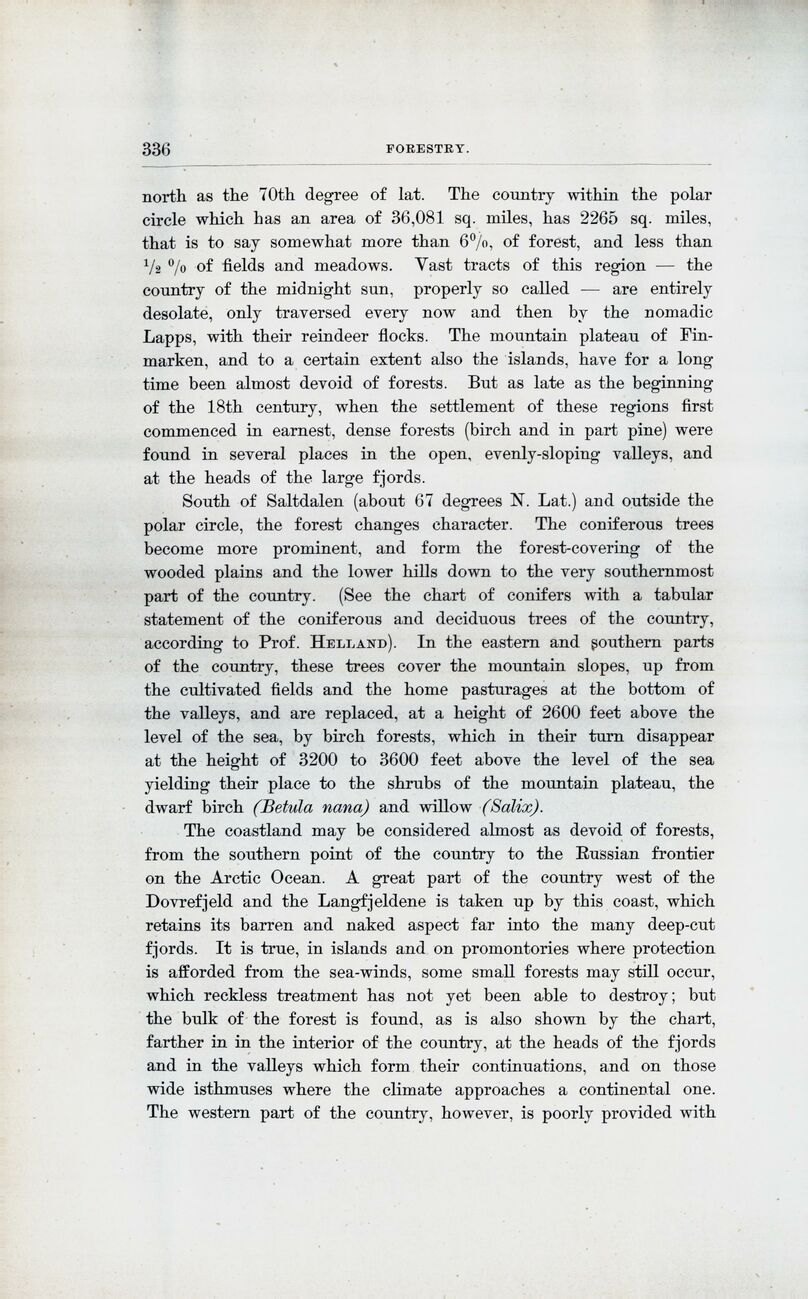
Full resolution (JPEG) - On this page / på denna sida - Forestry, by K. A. Fauchald

<< prev. page << föreg. sida << >> nästa sida >> next page >>
Below is the raw OCR text
from the above scanned image.
Do you see an error? Proofread the page now!
Här nedan syns maskintolkade texten från faksimilbilden ovan.
Ser du något fel? Korrekturläs sidan nu!
This page has been proofread at least once.
(diff)
(history)
Denna sida har korrekturlästs minst en gång.
(skillnad)
(historik)
north as the 70th degree of lat. The country within the polar
circle which has an area of 30,081 sq. miles, has 2265 sq. miles,
that is to say somewhat more than 6 %, of forest, and less than
½ % of fields and meadows. Vast tracts of this region — the
country of the midnight sun, properly so called — are entirely
desolate, only traversed every now and then by the nomadic
Lapps, with their reindeer flocks. The mountain plateau of
Finmarken, and to a certain extent also the islands, have for a long
time been almost devoid of forests. But as late as the beginning
of the 18th century, when the settlement of these regions first
commenced in earnest, dense forests (birch and in part pine) were
found in several places in the open, evenly-sloping valleys, and
at the heads of the large fjords.
South of Saltdalen (about 67 degrees N. Lat.) aud outside the
polar circle, the forest changes character. The coniferous trees
become more prominent, and form the forest-covering of the
wooded plains and the lower hills down to the very southernmost
part of the country. (See the chart of conifers with a tabular
statement of the coniferous and deciduous trees of the country,
according to Prof. Helland). In the eastern and southern parts
of the country, these trees cover the mountain slopes, up from
the cultivated fields and the home pasturages at the bottom of
the valleys, and are replaced, at a height of 2600 feet above the
level of the sea, by birch forests, which in their turn disappear
at the height of 3200 to 3600 feet above the level of the sea
yielding their place to the shrubs of the mountain plateau, the
dwarf birch (Betula nana) and willow (Salix).
The coastland may be considered almost as devoid of forests,
from the southern point of the country to the Russian frontier
on the Arctic Ocean. A great part of the country west of the
Dovrefjeld and the Langfjeldene is taken up by this coast, which
retains its barren and naked aspect far into the many deep-cut
fjords. It is true, in islands and on promontories where protection
is afforded from the sea-winds, some small forests may still occur,
which reckless treatment has not yet been able to destroy; but
the bulk of the forest is found, as is also shown by the chart,
farther in in the interior of the country, at the heads of the fjords
and in the valleys which form their continuations, and on those
wide isthmuses where the climate approaches a continental one.
The western part of the country, however, is poorly provided with
<< prev. page << föreg. sida << >> nästa sida >> next page >>